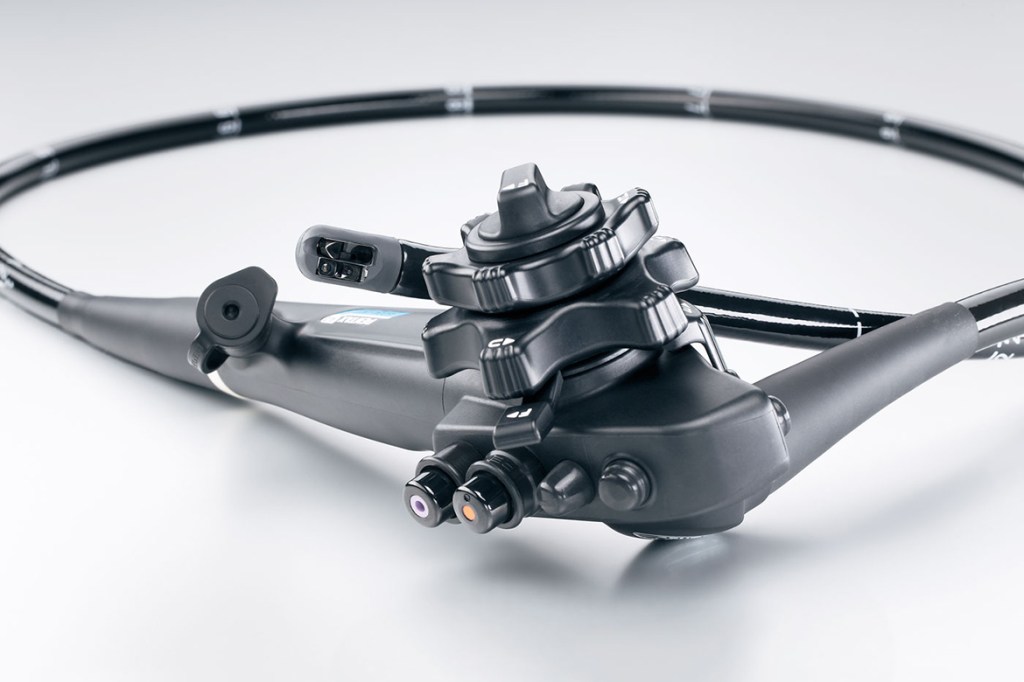Seeking to prevent superbug outbreaks, federal health officials said they have approved the first gastrointestinal medical scope with a disposable cap for use in the U.S.
The Food and Drug Administration said that the design of the new duodenoscope by Japanese device maker Pentax should make it easier to remove dangerous bacteria that can become trapped inside these reusable instruments.
“We believe the new disposable distal cap represents a major step toward lowering the risk of future infections associated with these devices,” said Dr. William Maisel, the acting director of the FDA’s Office of Device Evaluation, in a statement Wednesday. “We encourage companies to continue to pursue innovations that will help reduce the risk to patients.”
But some medical experts questioned whether this design change goes far enough to protect patients.
“This new scope will probably reduce the infection risk, but I’m not sure by how much,” said Lawrence Muscarella, a hospital-safety consultant in Montgomeryville, Pa.
In addition, he and other experts said, this is just one scope, and its modest redesign will not address the shortcomings that plague many different medical scopes on the market and continue to put patients at risk of antibiotic-resistant infections.
Pentax didn’t provide any details Thursday about when the new duodenoscope will be available or what it may cost. In general, duodenoscopes can cost up to $40,000 apiece, and they can represent a major expense for hospitals that handle a large volume of procedures.
In a statement, the company said “the disposable distal cap design represents a significant advancement in infection control.”
One advantage of a removable cap is that it would allow hospital cleaning staff better access to tiny crevices and small parts at the tip of the scope. Some areas are hard to reach with brushes and washing machines, increasing the risk of bacteria being passed from one patient to another.
While the scope tip has proven troublesome, experts say harmful bacteria also have been found in other areas, such as biopsy ports and instrument channels.
“I think it may be a step in the right direction to have single-use components whenever possible. But we still have gaps here,” said Cori Ofstead, a researcher and epidemiologist in St. Paul, Minn.
She and other infection-control experts are urging manufacturers and regulators to move toward sterilization for all medical scopes, which would involve gas or chemicals and be a step above the current federal requirement for high-level disinfection. That change would likely require further design changes to enable complex scopes to withstand the process.
Other device manufacturers have gone in a different direction, developing scopes that are fully disposable, rather than just enabling the cap to be thrown away. The FDA recently approved two colonoscopes that are designed to be used just once. Other companies are promoting similar devices for use in the lungs and kidneys.
Doctors put duodenoscopes down a patient’s throat to diagnose and treat problems in the digestive tract, such as gallstones, cancers and blockages in the bile duct. There are about 700,000 of these ERCP procedures done annually in the U.S.
Since 2015, U.S. prosecutors, lawmakers and government regulators have been investigating dozens of infections and deaths tied to duodenoscopes.
The Los Angeles Times broke the news about a superbug outbreak at the Ronald Reagan UCLA Medical Center in February 2015, which triggered an FDA warning the next day. Those infections involved the industry’s leading scope maker, Tokyo-based Olympus Corp. The newspaper later reported that Olympus knew about infections and potential flaws with its duodenoscope as early as 2012 but failed to alert American hospitals or regulators.
Last year, the FDA said that as many as 350 patients at 41 medical facilities in the U.S. and worldwide were infected or exposed to tainted duodenoscopes from January 2010 to October 2015.
A U.S. Senate report in 2016 identified four outbreaks tied to Pentax duodenoscopes at hospitals and clinics in Illinois and Massachusetts.
More recently, in January, the FDA issued a safety alert about Pentax’s current duodenoscope model. The agency warned medical providers that cracks and gaps can develop in the device’s tip that “could allow fluids and tissue to leak into the duodenoscope.” The FDA urged hospitals to immediately remove scopes from service that showed signs of damage.
Muscarella, the hospital-safety consultant, said it was surprising the FDA “didn’t require removal of the product from the market considering the risk of superbug infections. It would seem Pentax was prodded by the FDA to come up with another solution, and this disposable cap design might be the company’s response.”
In a statement last year, Pentax said, “We are dedicated to patient safety and are consistently evaluating advancements in flexible endoscope design.”
A number of recent studies have found evidence of persistent contamination in a wide range of reusable devices, including colonoscopes and ureteroscopes.
This story was produced by Kaiser Health News, which publishes California Healthline, an editorially independent service of the California Health Care Foundation.








